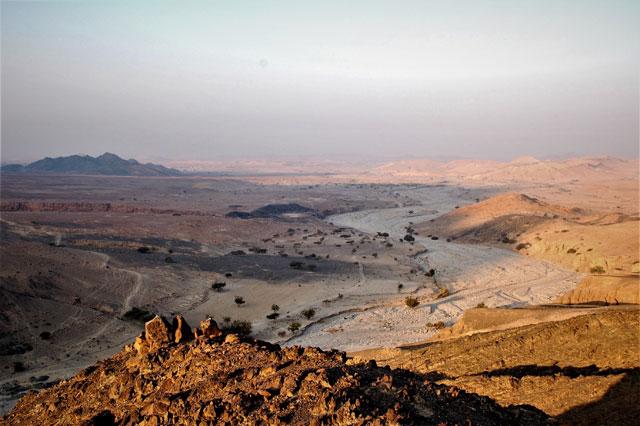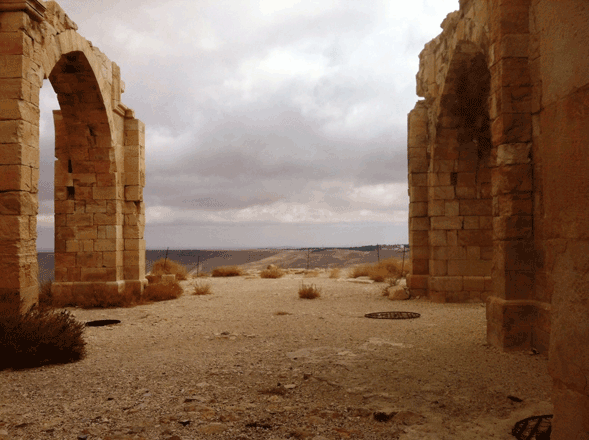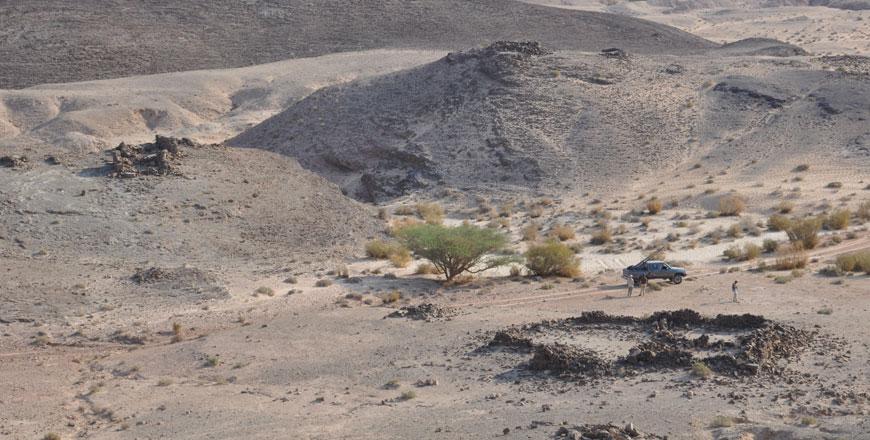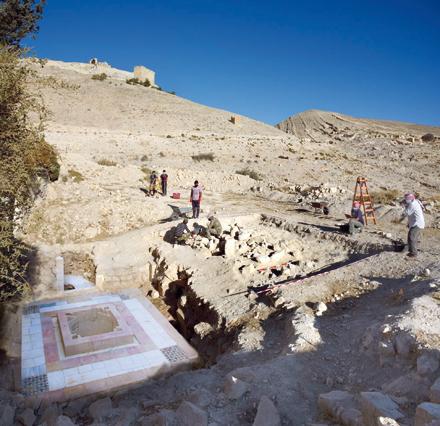You are here
American scholar examines contribution of ancient copper mines
By Saeb Rawashdeh - Dec 09,2017 - Last updated at Dec 10,2017

The archaeological sites in the Faynan region are ‘the only record’ we have of the Ayyubid cooper industry in Jordan, according to Ian Jones (Photo courtesy of Mohammad Najjar)
AMMAN — “We do not possess enough primary sources about the contribution of the copper mining sector to the economy of the Ayyubid-Mamluk dynasty,” said American anthropological archaeologist Ian Jones.
“An interesting thing about Faynan is that we have no information at all, at least that we know of. The only primary sources we have that discuss copper mining in the Faynan region date back to the early Byzantine period, with the most important being Eusebius of Caesarea,” Jones, an ACOR-CAORC fellow, said.
“The archaeological sites in the Faynan region are the only record we have of the Ayyubid copper industry in Jordan. If we include southern Wadi ‘Araba, Ibn Iyas [1448- 1522, a famous Egyptian historian] also mentioned copper mines near Aqaba”, Jones said in a recent e-mail interview with The Jordan Times.
“That suggests that those mines were active in the late Mamluk period, although he doesn’t really say much about them,” the American scholar continued, maintaining that “probably the most important source for copper in the Mamluk period was Al Maqrizi [another Egyptian historian 1364–1442], who wrote a lot about the role of copper coins in the later 14th century Mamluk economy.”
Leaving aside Maqrizi’s arguments about copper currency, Jones said “it is not surprising that we did not find evidence for Mamluk period mining” in Faynan, around 200km south of Amman.
The transition between the rule of Fatimid and Ayyubid-Mamluk is one of the most interesting and persistent problems in the Islamic archaeology of Jordan, in part because it is still very difficult for archaeologists to identify the 11th century, the researcher underlined.
This was a politically complex period, with competition in the region between the Fatimids, the Seljuqs, the Jarrahids, and, at the end of the century, the Crusaders, Jones claimed, adding that, “if we look at an archaeological map of southern Jordan in the 11th or 12th century, we would only see a handful of sites”.
“This is definitely not an accurate picture of settlement patterns, and, as more Middle Islamic sites in southern Jordan are excavated, I think we will also see more evidence of this period,” he added.
“This would help us in determining what effects, if any, these political changes had on local people,” Jones pointed out, underlining that, in the Petra region for example, the number of Crusader castles suggests that the Crusaders did not have very secure control over the region, which is also indicated by the available historical sources.
“But how would the lives of the people living near Petra have been affected by the change from fairly indirect Fatimid control and local Jarrahid strongholds to the presence of multiple, fortified Crusader sites?,” the researcher asked, wondering how this would have affected their daily lives in an archaeologically visible way.
Copper and sugar
Jones, who is a PhD candidate in Anthropology at the University of California, San Diego, is also a part of the team of the Edom Lowlands Regional Archaeology Project (ELRAP), directed by Tom Levy and Mohammad Najjar.
Levy and Najjar’s recent work which sought to merge the research of traditional archaeologists with cyber technology, greatly influenced the work of Jones.
“The excellent German surveys in the 1980s established the basic outlines, and the ELRAP and British surveys that followed filled in some of the blanks,” he explained.
“I had assumed that we would find evidence for copper production from the Ayyubid in the early Mamluk period at least, which at the time was what most people working on the later periods in the Faynan region thought. Surprisingly, we only found evidence for production during the Ayyubid period,” Jones emphasised.
He previously suggested that there might be a connection between the copper mines in Faynan and the sugar industry around the Dead Sea and in the Jordan Valley, which expanded substantially in the late 12th and 13th centuries (the cauldrons that the cane juice was boiled in were made of copper).
“Of course, copper had other uses, but the timing really matches,” he speculated, adding that the Faynan copper industry was active only during this period when sugar was taking over as the major cash crop in the region, which also happens to be a period when the Ayyubid princes of Karak may have had trouble importing European copper.
The research team also knew that copper production in Faynan involved a fairly major effort.
“ The miners built a village, now called Khirbat Nuqayb Al Asaymir, near one set of mines, but the ore used at Khirbat Faynan may have come from 10km to the east or more, from mines in a small wadi between Dana and Shawbak,” he elaborated, noting that the team collaborated with Brita Lorentzen, a researcher at the Cornell University Tree-Ring Laboratory, who analysed the charcoal from both sites and found that a lot of it was from oak trees, which also must have come from the highlands to the east.
“Clearly it was worth going to a lot of trouble to produce copper, and the connection to the sugar industry explains this,” he underscored.
Related Articles
AMMAN — Specialisation in livestock management was a significant feature of Transjordan during the Mamluk period (1250-1517), noted a Britis
AMMAN — Researchers are digging up hints of an important Ayyubid copper production site in Wadi Al Ghuwaybi, an American anthropological arc
IRBID — The findings of the Italian archaeological mission in Jordan were highlighted at the 15th International Conference on the History an



















